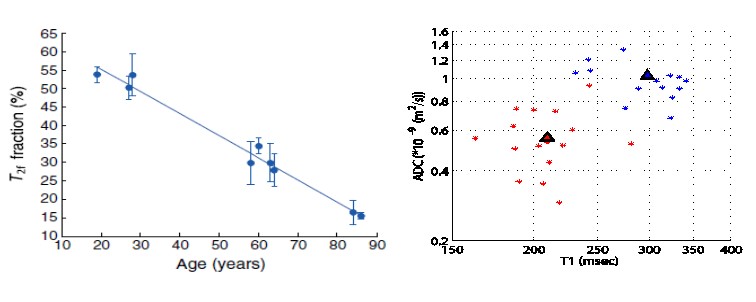Biomedical applications with a unilateral NMR scanner
- Tel Aviv University, Biomedical Engineering, Tel Aviv, Israel
Unilateral NMR scanners are typically small, low field devices that use permanent magnets to collects magnetization from objects placed on top of the magnet. Biomedical applications with unilateral scanners were customarily avoided due to the significant inhomogeneity (stray field gradient). This inherent gradient leads to a low penetration depth and a low sensitivity due to selection of very thin slices, very short T2* and T2,eff. Unilateral scanners were thus used in the past mainly for non-destructive applications, as well as for characterization of materials. These applications harness the advantages of these scanners: the capability to work with objects too large for the bore of typical magnets and the low sensitivity to susceptibility artifacts.
Biomedical applications with unilateral NMR scanners evolved in the last decade due to different technological advancements. The NMR-MOUSE was invented and popularized at RWTH Aachen University (Bluemich, Scien. Am. 2008). Magnets of different field profiles with a reduced stray gradient, or with a uniform field across planar slices were developed (Perlo, Science, 2005; Science, 2007). Novel acquisition schemes included the Fourier profiling, the use of Chirped pulses for fast acquisition of thick profiles (Casabianca, APMR, In press), or the acquisiton and characterization of noise, for reliable reconstruction of relaxation times (Bergman, JMR, 2014).
Biomedical applications that were demonstrated with unilateral stray field scanners include imaging and NMR of the Achilles tendon (Haken, JMR, 2000), profiling of the human skin (Danieli, JMR, 2013) and in-vivo quantification of human skin aging and of the effect of exposure to the sun on the skin (Fig. 1 , left; Bergman, NMR in Biomed, 2015). Lately, an experimental model of osteoporosis was tested with the NMR-MOUSE and demonstrated the capability to detect, with stray field NMR, the early changes in bone marrow composition that precede the loss of bone mineral density (Fig. 1 , right; Sarda, Submitted for publication).
The technology of stray field NMR scanners should be further optimized and tested in clinical scenarios. I propose that by virtue of its portability, simplicity and affordable costs, this technology will eventually act as a game-changer in the NMR and MRI market.

